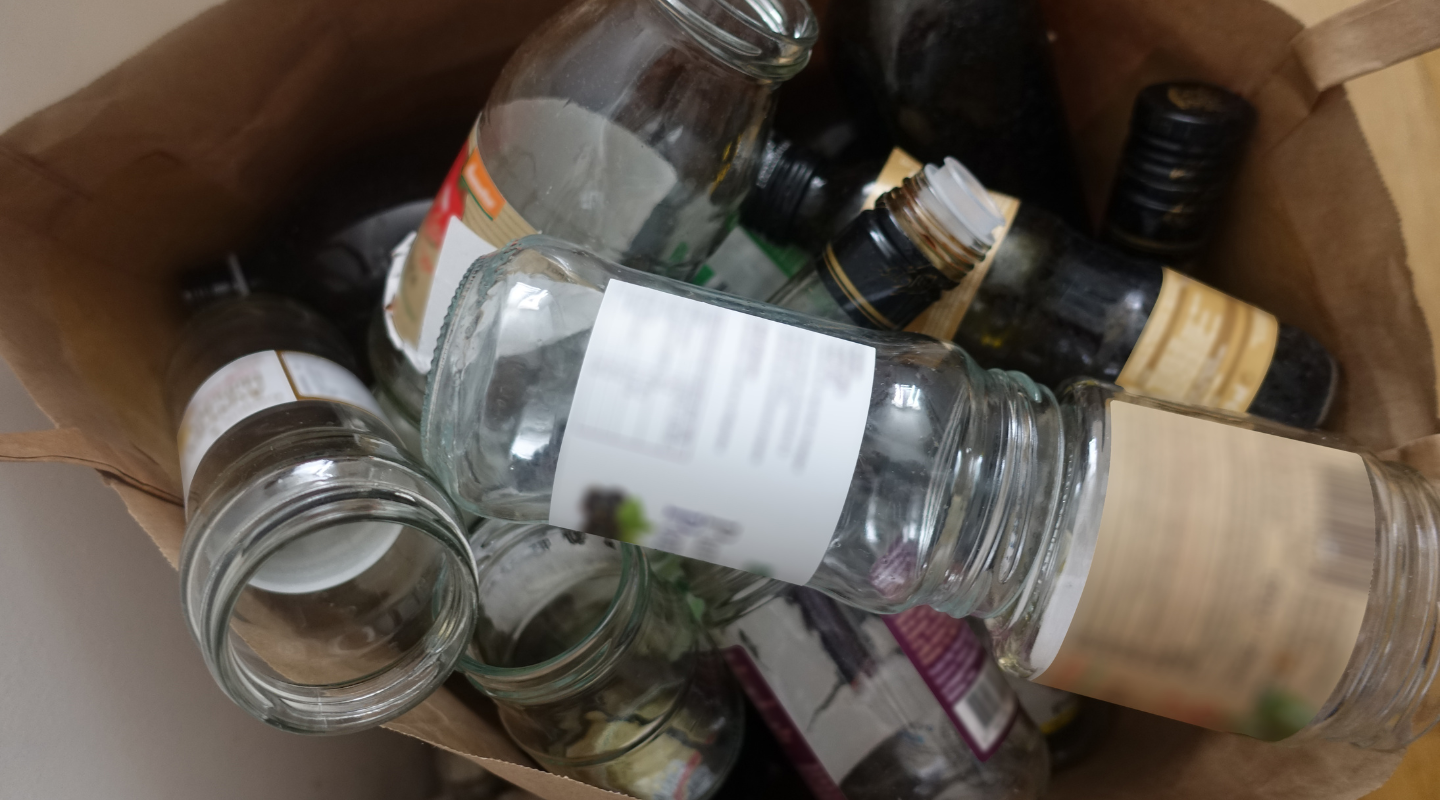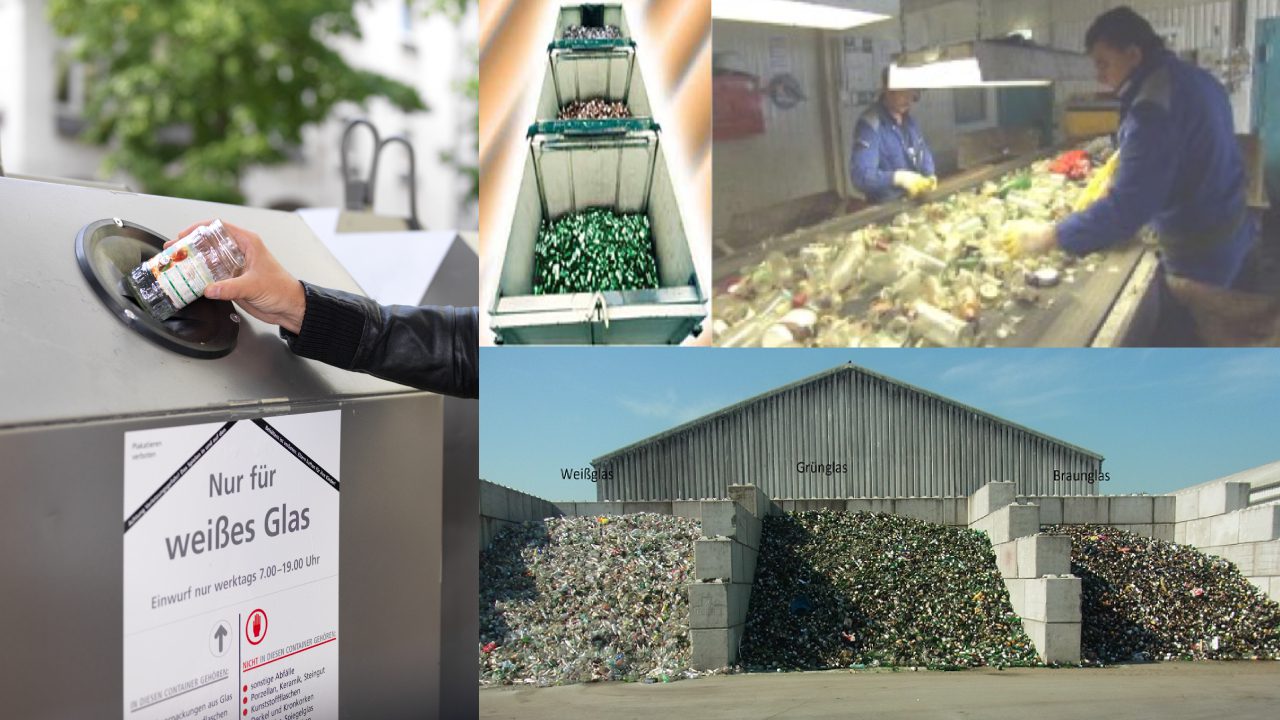According to Ulrich Ix, Glass Marketing Director at Der Grüne Punkt – Duales System Deutschland in Cologne, “the most important part of the glass recycling process is your journey to the bottle bank. By putting your leftover glass bottle, jar or pot into the correct container, you’re taking care of the important first step of pre-sorting. That’s something no glass recycling plant can do.”
I’ve been working in the glass recycling industry for more than 30 years, and I’m lucky to work with what I think is the best packaging, especially for food and beverages. Glass forms a virtually inert barrier – nothing gets in or out. That means, in glass, my favourite fizzy drinks keep their fizz, and my favourite sauces taste exactly as they should.
But the best thing about glass that it can be endlessly recycled, with no loss in quality. That’s why used glass is the most important raw material in container glass manufacturing: every item of glass packaging today contains around 60% used glass, or “cullet,” and in green bottles it can be as much as 90%! To maintain and improve this level of recycling, it’s important that consumers dispose of used glass properly.
Glass recycling made easy
Your first stop for getting glass recycling right is the bottle bank. For glass containers – food and drink packaging like wine bottles and yoghurt pots, or pharma and cosmetic glass packaging like cough medicine and perfume flacons – the bottle bank is the place to go. But not all glass is created equal! Some glass items like drinking glasses, light bulbs and window glass don’t belong in the bottle bank, and neither do ceramics or porcelain; instead, throw them away with your general waste or in a special waste bin if available.
Once you’ve got your glass containers to the bottle bank, look at their colour. In much of Europe, we separate by colour to produce new glass. If somebody puts a green glass item in the transparent glass bottle bank and it gets mixed with transparent cullet, you’ll be left with a newly recycled glass container with a slight green tinge. So, always put transparent glass in the clear bottle bank, amber glass in the amber bottle bank and green glass in the green bottle bank. Likewise, many people believe that the collection truck mixes all the glass from the bottle banks together, but that’s not true! When it’s time for glass to be collected, each truck has three different containers – one for each glass colour. The containers are also unloaded separately at the recycling facility, and the glass is then processed separately by colour.
At the glass recycling facility – sort, sort, sort
There are as many as 160 recycling plants in Europe; 22 in Germany alone. Their job is to sort post-consumer glass, and provide cleanly separated glass cullet to glass manufacturers to produce new containers. When used glass arrives, it’s put on a conveyer belt to remove ‘large contaminants’ such as plastic bottles, bags or clothes by hand. I’m always amazed to see the things people thoughtlessly put into the bottle bank.
Next up, we crush the glass into smaller pieces and remove all non-recyclables. Ceramics, stoneware and porcelain (materials that are too often wrongly put in the bottle bank) are recognised by optoelectronic sorters and removed with compressed air; aluminium and iron lids for water bottles or jam jars are detected and then lifted by a magnet; and plastic caps are recognised as opaque and either removed by compressed air or by a suction system. As for labels and stickers? As the cullet is bouncing around on the belt, the abrasive motion is enough to rub them off completely.
Throughout this rigorous recycling process, you might be surprised to hear that we don’t use any water at all. Again, the cullet on the conveyor belt does the work for us, rubbing against itself to produce a self-cleaning effect. But that doesn’t mean we can’t help out at home. While you don’t need to wash your leftover glass containers thoroughly (except for honey jars, which should be rinsed out to protect bees from infections), be sure to scrape out any remaining content before putting them in the bottle bank.
Taking glass recycling to the next level
Glass recycling already works well in Germany and many other European countries, but there’s still room for improvement! I would love to see a 100% glass recycling rate, where every item of glass that’s sold is recovered and recycled. To achieve that, we need everyone involved to work together: municipalities, consumers, recyclers, glass manufacturers, product designers, fillers, retailers and legislators. Whether you’re on the way to work, taking a walk through the park or picking up the weekly shop, everyone should have easy access to a bottle bank.
Consumers should also have access to better information about sustainable recycling. German citizens are currently still throwing as much as five or six kilograms of used glass per year into their general household waste. Because household waste doesn’t get sorted, that glass sadly never gets recovered or recycled. That’s why we need to start educating people about glass recycling from a young age, and I think the International Year of Glass is the perfect time to do that.
We can only bring about change if we make the younger generation aware of the importance of recycling glass and how to recycle it properly. Then we’d have 82 million glass recycling experts in Germany alone! One of the best ways to encourage people to recycle is to make sure they understand what a big environmental impact it has. By increasing the amount of glass that we recycle and reuse, we conserve natural resources and energy – every 10% increase in the recycled cullet use leads to a 3% reduction in energy consumption. As we all want to do our bit for the planet, that seems like an easy place to start!
Ulrich Ix has held various positions in the glass recycling sector over the last 30 years. Today, Ulrich is Glass Marketing Director at ‘Der Grüne Punkt – Duales System Deutschland’ in Cologne, Germany and president of FERVER, the European Federation of Glass Recyclers, based in Brussels, Belgium.






